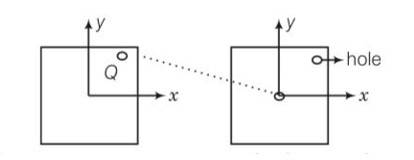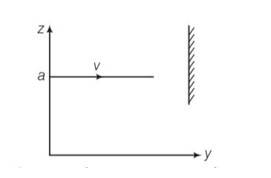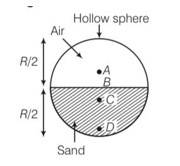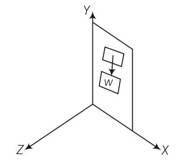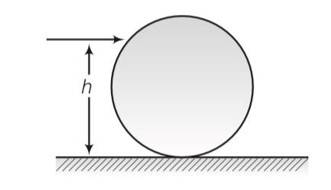Systems of Particles and Rotational Motion
Get insights from 31 questions on Systems of Particles and Rotational Motion, answered by students, alumni, and experts. You may also ask and answer any question you like about Systems of Particles and Rotational Motion
Follow Ask QuestionQuestions
Discussions
Active Users
Followers
New answer posted
5 months agoContributor-Level 10
This is a multiple choice type question as classified in NCERT Exemplar
(b) When the small piece Q is removed and glued to the centre of the plate . the mass closer to the z axis . hence moment of inertia decreases.
New answer posted
5 months agoContributor-Level 10
This is a multiple choice type question as classified in NCERT Exemplar
(d) we know that angular acceleration , given w=constant
where w is the angular velocity of the disc
Hence angular acceleration is zero.
New answer posted
5 months agoContributor-Level 10
This is a multiple choice type question as classified in NCERT Exemplar
(b) The initial velocity is vi = vey and after reflecting from the wall the final velocity is vf= -vey. The trajectory is described as r= yey+aez.
hence the change in momentum is r .
New answer posted
5 months agoContributor-Level 10
This is a multiple choice type question as classified in NCERT Exemplar
(c) Centre of mass lies towards the part of system of higher mass. In the above diagram the lower part is heavier bigger mass is downward . So COM lies below diameter.
New answer posted
5 months agoContributor-Level 10
This is a multiple choice type question as classified in NCERT Exemplar
(d) The bangle is in the form of ring. The centre of mass lies at the centre which is outside the body so C.O.M of bangle lies outside the circle.
New answer posted
5 months agoContributor-Level 10
This is a short answer type question as classified in NCERT Exemplar
Let b be the position vector of the centre of mass of a regular n-polygon.
(n-1) equal point masses are placed at (n-1) vertices of the regular n polygon, therefore for its centre of mass
rCM=
(n-1)mb+ma=0
B=-
New answer posted
5 months agoContributor-Level 10
This is a short answer type question as classified in NCERT Exemplar
Where weight of the door acts along negative y axis
A force can produce torque only along a direction normal to itself as . So when the door is in the xy plane the torque produced by gravity can only along z direction. Never about an axis passing through y direction. Hence the weight will not produce any torque.
New answer posted
5 months agoContributor-Level 10
This is a short answer type question as classified in NCERT Exemplar
Wheel is a rigid body. The particles that constitute the wheel do experience a centripetal acceleration directed towards the centre. This acceleration arises due to internal elastic forces which cancel out in pairs.
In a half wheel the distribution of mass about its centre of mass is not symmetrical, therefore the direction of angular momentum of the wheel does not coincide with the direction of its angular velocity. Hence an external torque is required to maintain the motion of the wheel.
New answer posted
5 months agoContributor-Level 10
This is a short answer type question as classified in NCERT Exemplar
no
The sum of torques about a certain point O
The sum of torques about any other O
The sum of torques about any other point O'
Here the second term need not vanish.
Sum of all torques about any point is zero.
New answer posted
5 months agoContributor-Level 10
This is a short answer type question as classified in NCERT Exemplar
Consider a fig in which m is mass of sphere and R is the radius having h height above the floor
The sphere will roll without slipping when w=v/r where v is linear velocity and w is angular velocity .
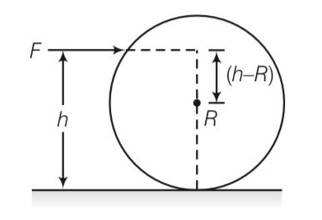
By conservation of momentum
mv (h-R)=Iw=2/5mR2 (v/R)
mv (h-R)=2/5mvR
h-R=2/5R
so h = 7/5R .d sphere will roll here so no loss of energy.
Torque = F (h-R)
For torque=0 h=R sphere will have only translational motion. It would lose energy by friction.
b
the sphere will spin clockwise when t>0 so h>R
so c and a
Taking an Exam? Selecting a College?
Get authentic answers from experts, students and alumni that you won't find anywhere else
Sign Up on ShikshaOn Shiksha, get access to
- 65k Colleges
- 1.2k Exams
- 679k Reviews
- 1800k Answers

